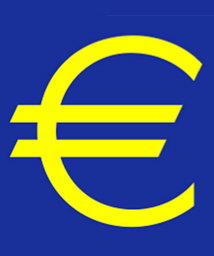The European Debt Crisis - What transpired and what can be expected
|
a perceived problem for the entire continent. If the ongoing debt crisis leads to a deep recession in the euro zone, the repercussions would be global. Global markets are likely to continue to be impacted by the euro area crisis for another two years, necessitating a solution either in the form of dissolution of the euro or unification of Europe on a fiscal and economic basis.
The European sovereign debt crisis is a result of a combination of economic and political factors. The globalization of finance, high-risk lending and borrowing practices during 2002– 2008, the global recession from 2008 to 2012, international trade imbalances, real-estate bubbles and bailout measures adopted by the crisis-affected nations are thought to be the major factors contributing to the unresolved European debt crisis.
The crisis, currently in its third year, is threatening to lead the world into another recession despite attempts to curb the contagion of the crisis. The recent agreement to aid Spain's ailing banks with a USD 126 billion (euro 100 billion) bailout reflects Europe's efforts to avoid financial chaos and is likely to steady financial markets and buy time for policy-makers to attend to other weak economies among the 17 countries that use the euro. However, Europe is still faced with bigger challenges that threaten the world economy.
Greece, Ireland and Portugal, the three countries primarily affected by the debt crisis, together account for 6% of the euro zone's gross domestic product (GDP).
Greece
Greece, one of the fastest growing economies in the euro zone in the early 2000s hid its growing debt and deceived European Union (EU) officials with the help of derivatives designed by major banks. With the advent of the global financial crisis in the late 2000s,
Greece's economy was impacted a great deal owing its large structural deficit and the sensitivity of its main industries—shipping and tourism—to fluctuations in the business cycles. Gradually, the country's debt increased with the expenditure borne by the government to support its economy, and in April 2010, the government requested an initial loan of euro 45 billion from the EU and International Monetary Fund (IMF). A second bailout package worth euro 130 billion was agreed in February 2012, resulting in a fall in Greece's debt from euro 350 billion to euro 240 billion in March 2012. Nevertheless, in mid-May 2012, the worsening of the crisis and Greece's inability to form a coalition government after the national elections held on May 6, led to speculations of Greece's exit from the euro currency union. Greece's dilemma is not only to put together a new leadership after the second round of elections on June 17, but also to choose either the strict austerity measures accompanied with the rescue package or to withdraw from the euro zone. If Greece chooses to leave the euro and reintroduce its national currency, the drachma, the economic and political impact would be catastrophic and could lead to hyperinflation, military coups and a possible civil war. Moreover, Greece's departure from the euro zone would raise fears that other European countries might also follow suit. The elections this weekend and the decisions made then and immediately after, will determine the future of the euro zone crisis.
Ireland
The debt crisis in Ireland began with the bursting of a property bubble financed by Irish banks, in 2007. The Irish economy subsequently collapsed in 2008 and the country's GDP fell by 32% in 2010. A euro 67.5 billion bailout was granted in November 2010 to support the country's ailing financial sector, and despite the government's backing of the European fiscal treaty that requires deficits to be kept below 0.5% of GDP, doubts prevail regarding Ireland's ability to return to the financial markets. The deepening of the euro zone crisis has temporarily put on hold government plans to sell short-term treasury bills worth up to euro 500 million. In addition, Ireland is preparing to access a second bailout through the European Stability Mechanism (ESM) created under the fiscal treaty.
Portugal
Portugal's debt crisis was a result of over-expenditure by the government for decades and an over- bureaucratized civil service necessitating a euro 78 billion bailout deal in May 2011 to save the country from national bankruptcy. The bailout package approved by European Financial Stabilisation Mechanism, the European Financial Stability Facility and the IMF demanded tough austerity measures and structural reforms. Portugal's economy has not seen growth in seven preceding quarters and is expected to shrink by over 3 percent in 2012 triggering speculation that the first bailout package for Portugal will prove insufficient and the country will ask for more money. However, there is hope that the country will be able to finance itself again by the end of 2013 and has better chances of overcoming the crisis than its neighbours in Western Europe. The Portuguese government managed to lower its deficit from 9.8 percent to 4.5 percent of GDP and the IMF expects the country to be able to return to medium and long-term debt sovereign markets by late 2013.
Italy
The global financial crisis of 2008 shrank Italy's economy by more than 6 percent and the rising debt crisis in 2011 further impacted the country's economy. Italy, the third-biggest economy of the euro zone, has more than euro 2 trillion of debt and about euro 300 billion of that will mature in 2012 calling for significant re-financing in the near future. The country adopted austerity measures in July and September 2011 to save euro 124 billion. Additional austerity measures were adopted in November 2011 and the country is on track to bring its budget deficit within the EU limit of 3 percent of GDP this year. Italy's jobless rate is at 12 percent and the country's banks are healthier compared to its Southern European neighbours. However, the situation could worsen as Italy's economy is predicted to shrink by 2.5 percent in 2012 and by another 2 percent in 2013 triggering speculation that the country will be the next in line to seek a bailout. Italy returns to markets on June 13, 2012, selling as much as euro 6.5 billion of treasury bills.
Spain
The crisis in Spain was a result of long-term loans, the building market crash, which included the bankruptcy of major companies, and a severe increase in unemployment, which rose to 22.9% by December 2011. As a consequence, Spain was compelled to officially request an emergency bailout on June 9, 2012. Euro zone finance ministers responded to Spain's request by offering a euro 100 billion bailout package to alleviate the immediate crisis in the euro zone's fourth largest economy. However, doubts soon arose regarding the bailout plan and the bailout is being regarded as a short-term solution to the region's debt crisis. Although finance minister Luis de Guindos said that the bailout package was sufficient, it is speculated that Spain's woes will continue owing to the subordination of private creditors and collapse of global confidence in the governing structure of the monetary union, even as the EU intends to closely monitor Spain's policies.
Germany
As of late, Germany has emerged as the euro zone's paymaster but has rejected several proposals for easing Europe's crisis. However, the situation in Greece has managed to soften Germany's stand and the German chancellor, Angela Merkel, said on June 7, 2012, that the country might support a fiscal union to counter the rising threats of the euro zone crisis. Although Germany's trade surplus outside the euro zone increased with the advent of the crisis, its trade surplus within the euro zone declined in 2011 as its biggest trading partners are other European countries who were less able to fund their trade deficits. Predicted declines in industrial production data in the euro zone, slated to be released this week, may instill fear in Germans making them more reluctant to assist their crisis-hit neighbours.
END
For further information, commentary and interviews, please contact us on +(91-22) 61772000 and info@polymerupdate.com
comments powered by Disqus
Sign up for our newsletters
More like this

Importance of PVC in Indian Petrochemical Industry — by Lekhraj Ghai Read More

The Aftermath of the Intensified Iran Sanctions Read More

Clintons' visit and India's dilemma Read More

Bio-based plastics: A market researcher's viewpoint Read More

Sebacic Acid—a unique, bio-based feedstock for green polymers: Interview with Roland Glotzer Read More




